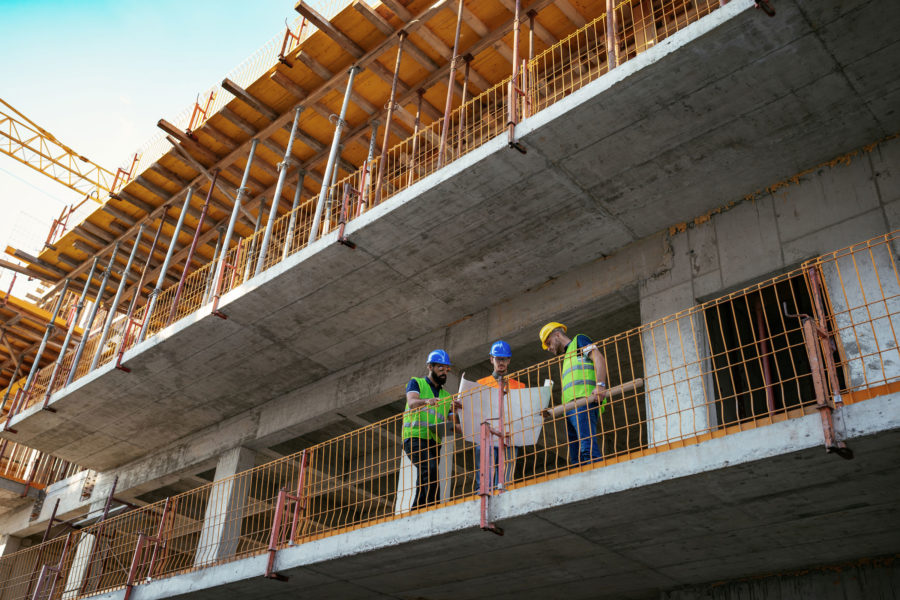Story at a glance:
- Preconstruction is critical to the success of your construction projects.
- Some construction firms could be more strategic when it comes to bidding.
- Explore three ways construction bids could be improved.
In today’s competitive market construction businesses are always looking for ways to stand out. While project performance and deliverables have a huge impact on business reputation, it is important to put your best foot forward before a project even begins.
Preconstruction is critical to the success of your construction projects—and your business. However, when it comes to bidding, construction firms are not always as strategic as they could be. Could your bids use some help?
Three ways to give your bids a boost include improving your bid-hit ratio, utilizing technology, and adding a personal touch.
Improve Your Bid-Hit Ratio

Photo courtesy of iStock
Do you know what your bid-hit ratio is? If not you’re missing out on an important way to measure the success of your bidding process.
Your bid-hit ratio is the rate at which you successfully bid on projects; it looks at the number of bids sent out compared to the number of jobs won. It is important to know your ratio and to track it over time and by project type.
Pay close attention to what types of projects you’re bidding on and where you have the most success. Consider breaking down your bid-hit analysis by different categories such as job type, job size, estimator, profit margin, public versus private, or geography. This can help provide more meaningful insights as to where you should focus more attention as well as the types of projects you might avoid.
In an attempt to win more work too many firms treat bidding as a numbers game, bidding on as many jobs as they can. However, bidding on projects you have little chance of winning ties up resources you could use elsewhere. Be strategic and bid smarter to get the projects that align with both your strengths and profit goals.
Utilize Technology

Photo courtesy of Sage
Utilizing the right technology can be a game changer for your business, especially in the preconstruction phase. Must-have technologies include estimating software, Building Information Modeling (BIM) solutions, and job cost accounting software. Your technology solutions will be most efficient when they work well together so consider cloud-based ERP and financial management systems that integrate with the other solutions your business is using. Let’s take a closer look at how estimating, BIM, and job cost accounting solutions can help you produce better bids.
Estimating Software
As construction businesses face stiff competition and tight margins, there is little room for error when it comes to estimates. However, estimating has historically been one of the most time-consuming and error-prone aspects of the preconstruction process. This is in part because of the heavy reliance on spreadsheets and other manual processes that increase the chance of errors and can erode profit margins before a project even begins.
Fortunately there is a better way. Estimating software helps you produce faster, more accurate estimates, enabling you to pursue the right work at the right price. Today’s technology allows estimators to do production estimating work concurrently with both 2D and 3D content. This streamlines the takeoff process and eliminates additional error-prone work. With the right technology tools in place, construction objects in a model can also be directly linked to assemblies in a customized estimating database.
BIM
Estimating software is even more effective when integrated with BIM solutions. BIM serves as a digital representation that communicates the physical and functional characteristics of a project. Its top benefits include better visualization, faster and more accurate takeoffs, and increased project collaboration.
BIM technology has become widely used in preconstruction and also serves as a valuable sales tool. Submitting a full 3D rendering of the finished project can give a firm an advantage when bidding against a firm that submits a 2D sketch. This also provides an invaluable tool when executing the project, helping to ensure the project is completed as accurately and efficiently as possible, which minimizes rework and reduces waste.
Job Cost Accounting Solutions
To deliver more accurate bids it is essential to understand your true job costs. Job cost accounting software provides all of the information you need about job costs, including labor, materials, and overhead. It also allows you to break down job costs by different categories like cost codes, project manager, customer, and job type so you can dig deeper to identify where you’re making the most profit and where you’re not.
Having this level of insight takes the guesswork out of your job costs in your estimating process. It helps you create bids that more accurately reflect your true job costs, which can aid in winning the work and ensuring you maintain a nice profit margin.
Integrating your estimating, BIM, and accounting solutions can help quickly deliver the information owners need, including accurate engineering and design-cost scenarios. Additional benefits include precise takeoff directly from electronic plans and building models, improved analysis by activity, phase, or other project breakdown, standardization of your estimating best practices, and built-in error detection. With the right technology in place, you can create faster and more accurate estimates so you can bid with confidence.
Add a Personal Touch
As preconstruction technologies gain in popularity, it is important to come up with other ways you can help your bids stand out. While a competitive bid and solid proposal are essential to landing a project, sometimes it also helps to think outside the box. Your proposal should also highlight what makes your firm unique and why you are the best fit for the job. Try to get some face time with the decision-maker during the bidding process. Personal interaction can go a long way when cultivating a business relationship.
If face time is not possible, at least do your research and know your potential client. Understand their needs and what is most important to them. In your face-to-face or virtual discussions, ask questions that provide information not found in the RFP. You want to gain a deeper understanding of what aspect of the job is most important to them and their top criteria for evaluating bids.
Then, when preparing your bids, be sure to add some extras. While price is always important, sometimes there isn’t a lot of variance, so project owners will look at other criteria. Be sure to demonstrate how your firm will go above and beyond expected levels of quality and service, beginning with your proposal. Having a 3D rendering along with photos and descriptions will help make it easy to visualize the finished project. It is also important to highlight your areas of expertise by including things like customer testimonials, awards, certifications, and anything else that helps elevate your credibility and reputation and shows them who you are. Humanizing your proposal can give it the edge it needs to rise above the competition.
Conclusion
Exploring your bid-hit ratio and being more strategic in the preconstruction process can help set your firm up for long-term project and business success. While it often takes time to adjust to new processes, going the extra mile in your bids is well worth the effort. It can empower you to win the best work for your firm—jobs you are excited about taking that are also profitable.


